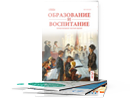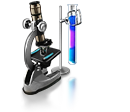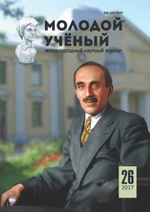At present, a high level of knowledge of a foreign language is one of the criteria by which a qualified specialist is assessed.
Under given conditions of economic and world politics, in our country it actively participates in the life of the world community and expands its international relations. These factors determine the increased demand for teaching foreign languages.
In the past, the most popular method of teaching a foreign language was a grammar-translation or traditional method, in which students were mainly taught reading and translating with a dictionary of foreign texts. In the process of using this method, the formation of communication skills was not the goal of training. Thus, the communication of the majority of residents in a foreign language was extremely problematic, due to the language barrier that arose from the fact that in the process of learning a foreign language, students did not learn a foreign language, but only received theoretical information about its structure. Possession of grammatical rules and the ability to translate foreign texts are insufficient conditions for successful communication in a foreign language. This led to the need to revise the goals, objectives and content of teaching a foreign language, as well as to change the methods of teaching and forms of control.
Currently, within the framework of changing the education system, the introduction of information and computer technologies in the educational process is being actively implemented.
The modern trends in the development of the world educational process include the use of new educational technologies in the learning process, which lead to the application of interactive learning technologies for foreign language that meet the following requirements: improving the efficiency and quality of teaching; providing motivation for independent cognitive activity; development of interdisciplinary connections.
The student becomes a full participant in the educational process; his experience serves as the main source of educational knowledge.
The teacher, in turn, plays the role of a guide. He does not provide knowledge in the finished form, but encourages learners to independently search. Compared with traditional learning in interactive learning, the interaction between the teacher and the learner alternates alternately. Several methods of learning are distinguished in modern methods:
− passive, when the student acts as an «object» of learning (listens and looks);
− active, when the student acts as a «subject» of training (independent work, creative tasks);
− interactive, in which the student interacts not only with the teacher, but also with others.
A passive model of learning is the form of interaction between a teacher and a student, in which the student acts as an object of learning activity, while the teacher is the main character of the activity. The students do not interact with each other. To this form of training can include a lesson, a lecture and an optional lesson.
With these forms of employment, the teacher interacts with students through interviews, control tasks and tests. From the point of view of modern pedagogical technologies and the effectiveness of students' mastery of the material, the passive learning model is ineffective. However, it may have positive characteristics, such as an easy-to-prepare training for the teacher and the ability to cover more teaching material in a time-limited environment.
An active model of learning is the form of interaction between the teacher and the student, in which the learner becomes the subject of educational activity to a greater extent, actively interacts with the teacher during the lesson. The student and the teacher have equal rights. Active methods of teaching presuppose the use of such a system of methodical methods of educational activity, which is directed mainly not at the teacher's presentation of finished knowledge and their reproduction, but on the independent mastery of knowledge by students in the process of active cognitive activity.
There are different levels of activity, such as:
− the activity of reproduction, which is characterized by the desire of the trainee, remember, reproduce knowledge, master the methods of application;
− the activity of interpretation, which is connected with the learner's desire to comprehend the meaning of the studied, to establish connections, to master the ways of applying knowledge of the changed conditions;
− creative activity which presupposes the learner's aspiration to theoretical comprehension of knowledge, an independent search for solutions to problems, and an intensive manifestation of cognitive interests.
The features of active learning include:
− forced activation of thinking, when the learner is forced to be active regardless of his desire;
− a sufficiently long period of involvement of students in the learning process, as their activity should be sustainable and long-lasting;
− presentation of the instructor as a subject of training;
− independent decision-making of students;
− increase the degree of motivation of trainees;
− constant interaction of trainees and teachers.
This form of training can include a seminar session, a seminar-dispute and consultation. In these forms of education, students show independence in educational and cognitive activities, resulting in deeper and more systematic knowledge.
Interactive learning model Interactive («Inter» is mutual, «act» is to act) means to interact, be in a conversation mode, dialogue with someone. Unlike active methods, interactive students are oriented to a wider interaction of students not only with the teacher, but also with each other and on the dominance of students' activity in the learning process. The place of the teacher in interactive classes is reduced to the direction of students' activities to achieve the objectives of the lesson. The teacher also develops a lesson plan.
The factors that stimulate the activity of students includes:
− Cognitive and professional interest;
− The creative nature of conducting classes;
− Competitiveness;
− The game character of educational and cognitive activity;
− Emotional impact of the above factors.
Among the main methodological principles of an interactive approach to teaching foreign languages are the following:
− mutual communication in a foreign language with the purpose of making and producing authentic information, equally interesting for all participants, in a situation that is important for everyone;
− joint activities, characterized by the interrelationship of three objects: the producer of information, the recipient of information and the situational context;
− changing the traditional role of the teacher in the learning process, transition to a democratic style of communication;
− the reflectivity of teaching, conscious and critical comprehension of the action, its motives, quality and results, both on the part of the teacher and students.
At the same time, the effectiveness of the learning process depends on the implementation of the following principles:
− communicative-situational learning;
− interactivity;
− differentiated approach;
− accounting for individual characteristics;
− Variability of the operating mode.
Interactive training allows you to develop the creative side of personality. The essence of interactive teaching methods is to focus on the mobilization of cognitive forces and aspirations of trainees, to awaken an independent interest in cognition, the development of their own ways of activity, the development of the ability to concentrate on the creative process and get pleasure from it. Interactive methods refer to the subject experience of students and help them in the learning process to master their own ways of discovering social experience.
References:
- Andreev A. A., Some Problems of Pedagogy in Modern Information and Educational Environments // Innovations in Education. 2004. № 6. P. 98–113.
- Galskova N. Modern methods of teaching foreign languages. М.: 2001. — P. 141.
- Dilyuchanskaya N. N. Interactive methods of teaching as a means of forming key competencies. M.: Science and Education, 2011.







